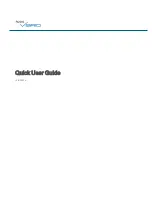
EXTENDED REFERENCE GUIDE
BARRYVOX
®
S
43
SEARCH
Search Tones in Fine Search
Within the fine search range, thus in the immediate vicinity of
the buried subject (approx. <3m), the Barryvox
®
assists you
with an artificial, distance and action related sound while fine
searching in a cross pattern.
For rescuers who can interpret the analog tone, it is helpful to
enable “Pro Search” ahead of time, as the more meaningful
analog tone will then be available to identify signal overlaps
(see chapter “Pro Search” and “Audio Guidance”).
Erase Mark
(requirement: activated “Pro Search” setting)
A mark can be removed by selecting the buried subject in the
burial list and selecting “Unmark” with the
key. You can
only remove the mark if you are in the immediate vicinity
(<6 m) of the buried subject (to adjust these settings: see
chapter “Search Settings”.
Deep Burials
The transceiver tries to detect high burial depth and, if required,
dynamically increases the fine search range. Marking a buried
subject at greater than 6 meters depth is not possible. For
further information, please see chapter “No Probe Hit”.
Search for Multiple Buried Subjects
Using the Standard Search Mode
In standard search mode, the transceiver attempts to analyze
all the detectable signals and to determine the number of
buried subjects. This is possible because the signals from each
transmitter have characteristics which are distinguishable from
the signals of other transmitters. The more unique the signal
characteristics are, the more accurately the signals can be dis-
tinguished and separated (pattern recognition). By automatically
associating the signals with their respective sources, multiple
burial situations can be solved without applying special search
tactics. Transceivers which also transmit W-Link information
can be detected particularly fast and reliably. The W-Link
information includes a unique identification as well as the
trasmit pattern.
List of Buried Subjects
The buried subjects whose transmit patterns can be identified
are inserted in the list of buried subjects based on their signal
strength, usually corresponding with distance. The closest
buried subject on the avalanche is shown at the bottom, the
furthest at the top of the list.
















































